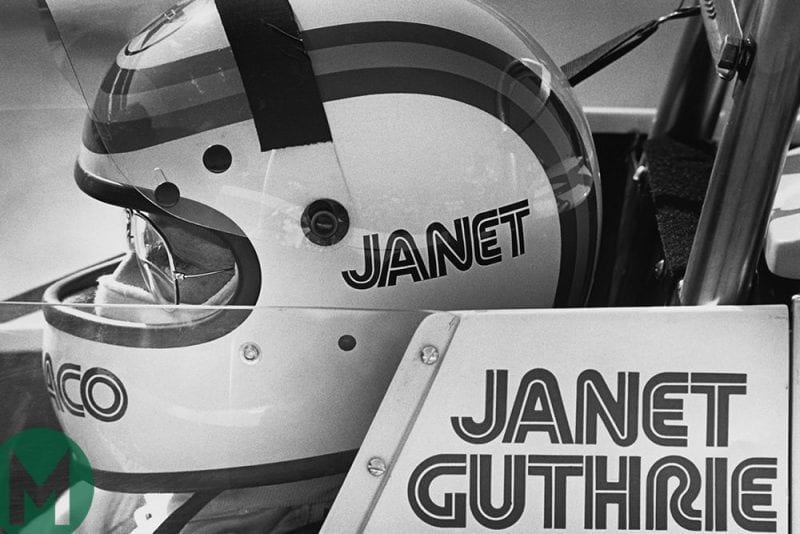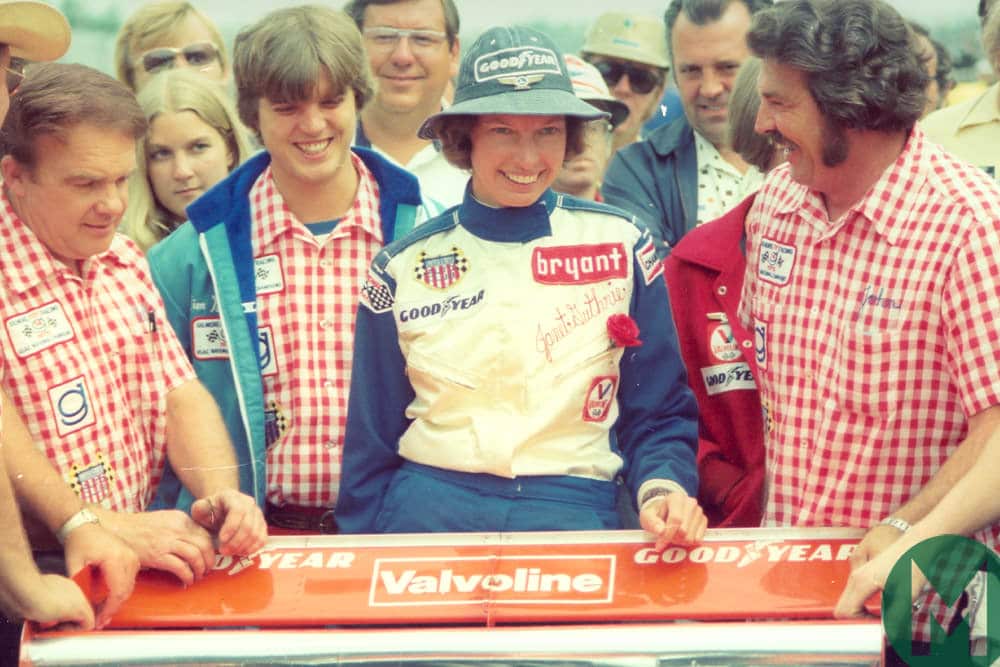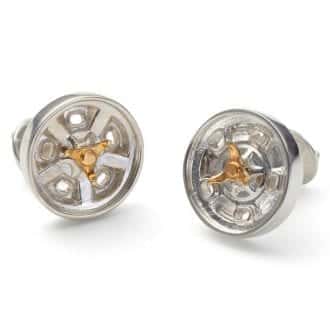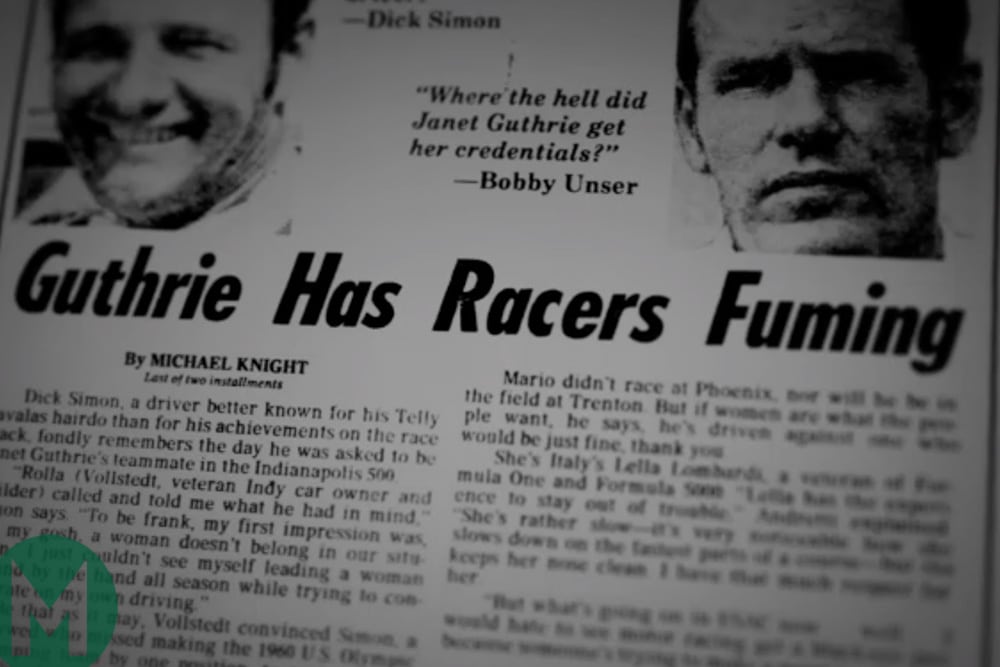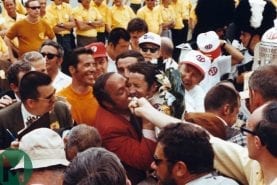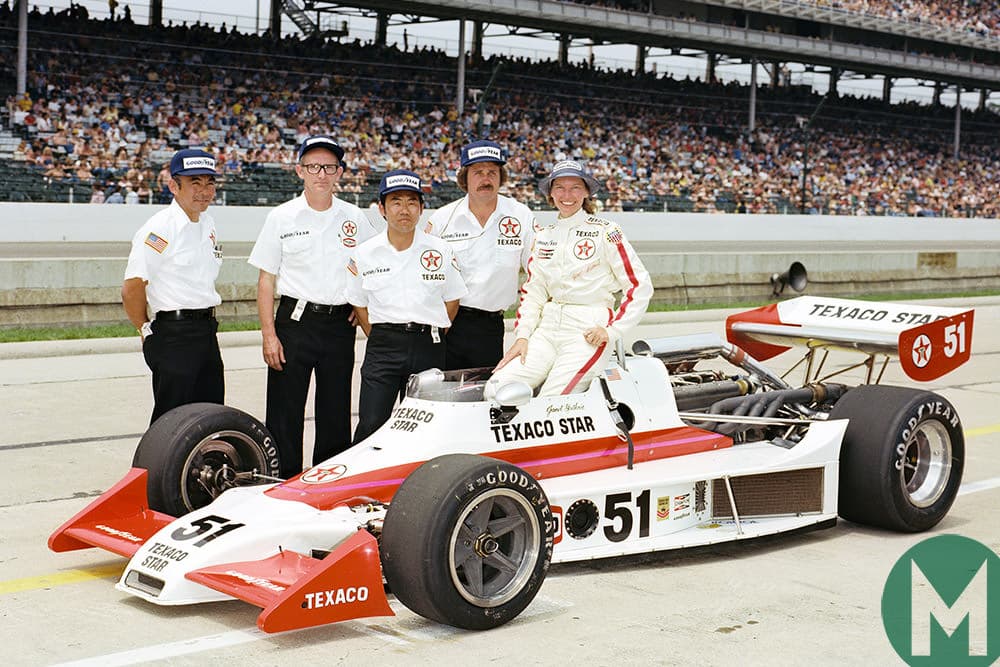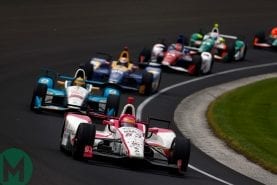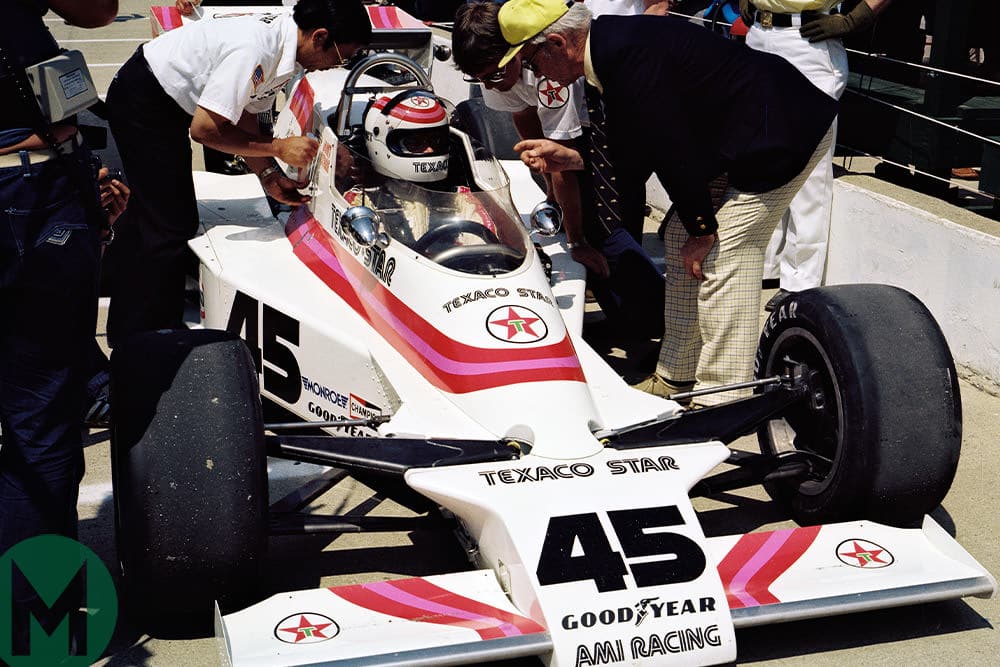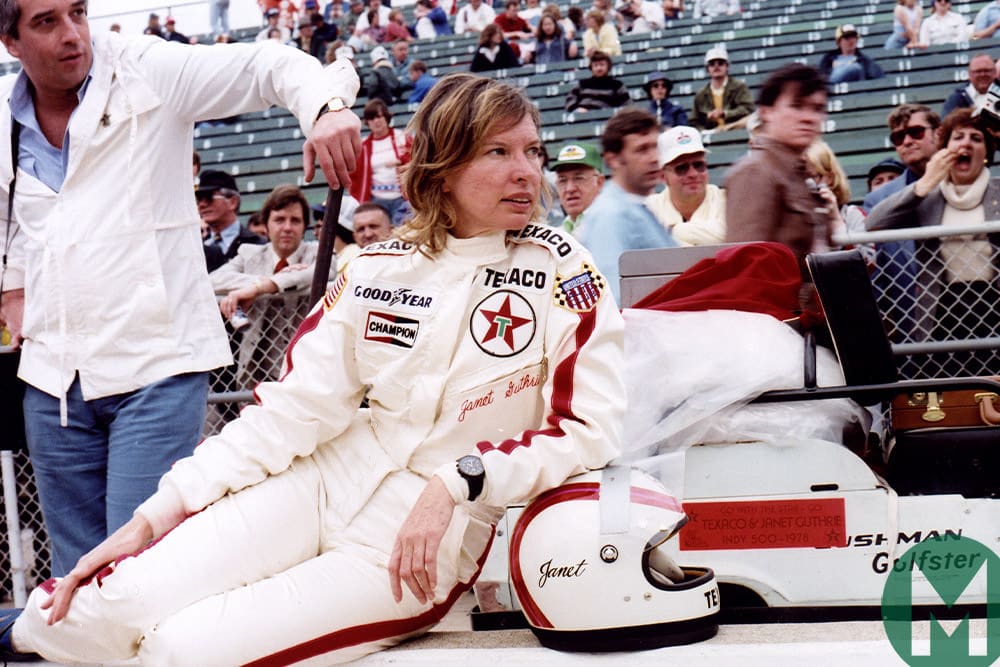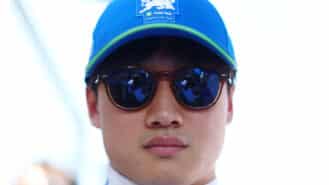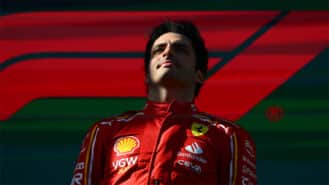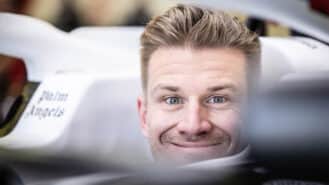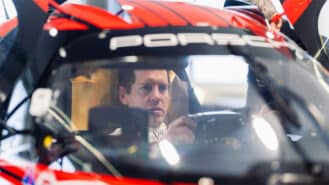Despite showing that she deserved a drive on merit, Guthrie would never compete on a level playing field at Indy, without access to the funding and support that leading drivers enjoyed.
In 1978, she set up her eponymous squad for the Indianapolis 500 – the most difficult Month of May she had.
“It’s a very expensive sport and it takes a lot to assemble a team, to run a full season, I would’ve loved to have had that opportunity,” she says.
“When I did assemble my own team in 1978, and ended up with a top-10 finish that year [ninth], I did it on a budget of about 5 per cent of a top team running a full year. It was no secret, I did it for $120,000.
“I had all the duties, obligations, responsibilities of a team owner as well as going out to drive the car, and especially under last-minute circumstances that really was tough. Driving the car was definitely the easy part.”
Janet Guthrie and her crew at the 1978 Indy 500 Motorsport Images
Underlining just how hard it is to be a driver/owner, Guthrie had a fractured wrist during the race (for which she was later reprimanded by officials), having to steer, change gears with a broken gearbox, and use a radio for which the volume button vibrated closed during the race.
“OK, so you needed one hand for the steering wheel, one for the gearshift and had I had a long prehensile tail to operate the radio I would’ve been fine,” she says nonchalantly.
Guthrie may shrug off the difficulties that she faced, but is in no doubt about the challenge that the Indianapolis 500 still represents, even to a well-funded team, such as McLaren, which failed to qualify with Fernando Alonso this year.
“I empathise [with McLaren],” she adds. “It’s happened before. There was one year where Roger Penske astonished the whole world when his cars did not make the field at Indianapolis. The guy who walked on water and his cars aren’t making the field? People have forgotten that that happened.”
More than forty years after Guthrie first raced at the Indy 500, there’s now only one woman in the 2019 field: Pippa Mann, who starts 29th on May 26. So, has the motor sport world done enough to let the women with talent compete?
“No I don’t think we have come far enough,” says Guthrie. “Pippa Mann is a very capable driver with a very good record, but you can’t drive Indianapolis 500 as your only race of the year with a backmarker team and expect to run up front, that’s not going to happen that way.”
